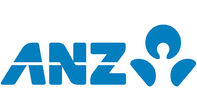
National Australia Bank (NAB.ASX)
Looking more holistically however, the business seems to be delivering on its franchise momentum (i.e. could result in higher surprises going forward on non-interest income). We also strongly support the proposed acquisition of Citigroup’s Australian consumer business and the divestment of the BNZ Life insurance business (i.e. this should see CET1 decline to 11.3% however, which may explain the more aggressive share buy-back).
Red Flags & Risks: As always, the biggest risks continue to be NIMs. Rather telling was the rise (granted, arguably short-term in nature) in expenses by 2%. The higher exposure for the business toward the Business segment should see it disproportionately exposed to continued supply chain disruptions and inflationary pressures (vis-a-vis deterioration in credit quality).
My Expectations: NAB was our preferred bank exposure when we previously visited the topic and, while it is no longer as cheap as it was, its higher exposure to Business banking should see it well placed to take advantage of the recovery economy and act as a cushion to any slowdown in the volume growth for residential mortgages. Indeed, the economic recovery has seen NAB’s Business and Private banking arms exhibit solid growth. This comes at the same time as management making significant progress in the area of customer experience.
Dividend Yield: 4.2%, assuming a share price at $32.37.
Australia and New Zealand Banking Group (ANZ.ASX)
 ANZ has been in the headlines lately and for all the wrong reasons. This involves issues around corporate governance, an ex-employee pointing to the use of wholesale deposits for CET requirements and sexual harassment claims. Not ideal but it’s not for us to delve too much into, given it is hardly likely to make a difference both in terms of share price performance or the bank’s broader corporate strategy. With that, let’s get to the numbers. The all important NIMs continued to fall, another 8bps, to around 1.57% (second half of fiscal 2021). The bank continues to face some inefficiencies in growing the home loan book – flat lined performance despite the market growing +6.5% over reported period – or offsetting lower margins. This broadly comes down to the approval process with the business continuing to lose market share. The only reprieve, it seems, is the institutional book which has, pleasingly, been the outperformer. One should expect this given that it has no great competition in the space in the domestic market. On the operational expenses front however, we have seen some stabilisation (broadly in line with expectations).
ANZ has been in the headlines lately and for all the wrong reasons. This involves issues around corporate governance, an ex-employee pointing to the use of wholesale deposits for CET requirements and sexual harassment claims. Not ideal but it’s not for us to delve too much into, given it is hardly likely to make a difference both in terms of share price performance or the bank’s broader corporate strategy. With that, let’s get to the numbers. The all important NIMs continued to fall, another 8bps, to around 1.57% (second half of fiscal 2021). The bank continues to face some inefficiencies in growing the home loan book – flat lined performance despite the market growing +6.5% over reported period – or offsetting lower margins. This broadly comes down to the approval process with the business continuing to lose market share. The only reprieve, it seems, is the institutional book which has, pleasingly, been the outperformer. One should expect this given that it has no great competition in the space in the domestic market. On the operational expenses front however, we have seen some stabilisation (broadly in line with expectations).Assuming the current run rate holds, we expect 2022 earnings of approximately $5.2bn, a decline from $6.198bn in 2021. The bank remains a laggard in comparison to competitors both in terms of approval times and automation of backend. Last time we undertook this exercise we found this to be the least risky of the Big 4 given a well-diversified revenue stream by way of an institutional book. While this his been the saving grace, there isn’t all that much in our view for the market to be particularly excited about. CET1 remains the lowest among the peers and, using APRA statistics, the bank continues to lose market share (13.6% vs 14.6% a year ago).
Red Flags & Risks: Aside from NIMs, which clearly remain the lowest (in comparison to her peers), the biggest risk seems to be a lack of delivery on its transformation. Operational costs continue to be substantially higher than forecast, market share being forfeit. We don’t see a clear strategic or tactical vision for the business going forward.
My Expectations: ANZ has now become the least preferred of the Big 4. We expect that the share price will continue to underperform in comparison to competitors though the bank, like all the Australian banks, remains well capitalised, enough to maintain a reasonable payout ratio. But, even at 75%, this is not something that is sustainable in our view. Management has to do something to keep alarmed shareholders in line though.
Dividend Yield: Assuming the unsustainably high payout ratio of 75%, then the current dividend yield stands at 5.1% (at $27.88 share price).

